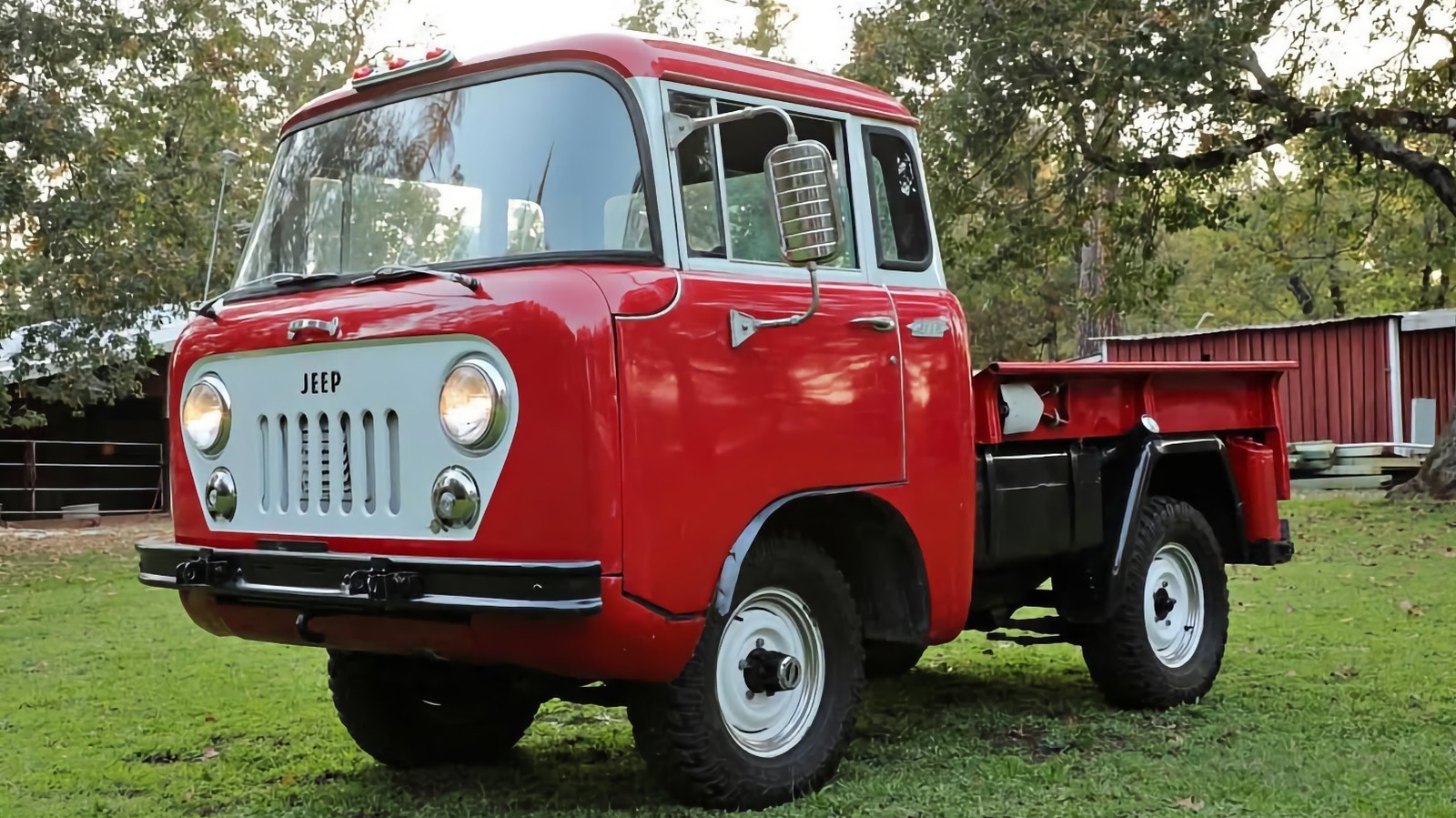
Today’s Nice Price or No Dice Jeep pickup was styled by none other than the legendary industrial designer Brooks Stevens. We’ll have to decide if its price is designed to please.
Corn (or, more accurately, Maize) is a cereal grain indigenous to the Americas that, today, is a staple crop across the globe. First domesticated by the native peoples of southern Mexico around nine centuries ago, it stands as a versatile backbone of the world’s farming industry. Here in the U.S., it serves as everything from livestock feed to the basis for corn tortilla street tacos—the best food ever—and the creation of grain alcohol that can be added to petroleum-based gasoline to help alleviate dependence on fossil fuels. The 2010 Saab 9-5 BioPower we looked at yesterday was an oddly named car designed to run on the highest concentrate mix of ethanol (E85), and throughout its life, it had burned through enough of the stuff to rack up an impressive 220,000 on the clock. Now ready to put even more miles in the rear-view, it hit Craigslist with a $2,950 asking. That worked out for most of you, who toasted the Saab with a 76% Nice Price win.
Ahead of the game
It’s been suggested—by then Army General Dwight D. Eisenhower, no less—that one of the contributing factors to the Allies having won WWII was the Willys Jeep. Not only was the Jeep hugely impactful during the war, but its legacy continued afterward, representing the only military vehicle of the era to make the transition to mass-market civilian life. And that was without assistance from the GI Bill.
Buckboard hard and limited in space, the CJ, or Civilian Jeep, served a small market in its initial years. That wasn’t going to prove economically viable for its maker, Willys, so additional offerings were introduced to hopefully attract new buyers and keep the existing ones happy.
One such model was the Forward Control pickup truck, first introduced for the 1956 model year. Based on the CJ-5 and sharing that truck’s tiny 81-inch wheelbase, the first FC-150 is notable for offering a full six-foot bed in a package that overall was over a foot shorter than a VW Beetle. That was made possible by mounting the two-seat cab over the front wheels with the engine nestled in between the driver and passenger, hence the name “Forward Control.” Later versions arrived with longer wheelbases and additional features, but this 1958 FC-150 represents the model’s most basic form.
Hurricane
Power for the FC comes from Willys’ 134 CID F-head four, anointed by the company as the dubiously named “Hurricane Four.” Here, that makes 72 horsepower and 112 pound-feet of torque, (both gross numbers), giving the two-and-a-half-ton FC a zero-to-sixty time of impossible and a top speed of improbable.
Early FCs came with a three-speed manual, also shared with the CJ-5, but that was supplanted by a four-speed box from this model year forward. Behind that is a two-speed transfer case driving leaf-sprung live axles at both ends. Braking is by way of drums all around and a lot of praying, while steering is via a recirculating ball box at the bottom of the extremely vertical column in the cab. Crash padding in that cab is by way of the occupant’s knees and yet more praying. The ad doesn’t give us any information regarding the condition of this FC’s mechanicals, only noting—incorrectly—that only 400 FCs were built this model year.
Cute as a bug
Regardless, we can see from the pictures that this red and white over a tan vinyl cabin edition is in great, seemingly restored condition. Its mechanicals are likely in similar nick. The styling of the FC was handled by Brooks Stevens, who also helped Jeep design the Jeepster and the Wagoneer. Designing the FC must have been an unenviable task since its proportions are so awkward that any effort to make it not appear goofy was likely futile.
That being said, the FC today comes across as “adorkable” and brings to mind its spiritual successor, the maybe-it-will-happen, maybe-it-wont Telo electric pickup. That modern take on the tiny truck offers more seating than the FC but at the cost of a smaller bed and a longer overall length as a result. This FC is claimed to be in “Good” condition, per its ad, has plenty of diamond plate in the cab, as is the fashion with old Jeeps, and features both an original cab heater under the dash and an added trio of gauges precariously wired to the engine cap. The bed features a tucked-under spare on one side and a gas tank on the other. Collapsable camp shovels are mounted to each bed wall, while hardware store hand pulls have been screwed to the back of the cab for some reason.
Pay it forward?
As noted, the description in the ad is even shorter than the truck. There is no information regarding title status, the age of the restoration, or even how many miles it has on it. Based on the license plate, it appears to be a California truck, but it is now offered in Cave Junction, Oregon, so it must have slipped across the border at some point. We’ll just have to go with the flow and figure out whether or not this FC is worth the $22,000 asked for it, based on the pictures and our own innate spidey sense.
What’s your take on this odd-bodkin Jeep and that $22K price tag? Does that feel like a deal after looking at the pictures and considering how fun this might be at car meets and Jeep-a-thons? Or does that feel like a backhanded deal for this Forward Control truck?
You decide!
Nice Price or No Dice:
Cave Junction Facebook Marketplace, or go here if the ad disappears.
H/T to Bill Lyons for the hookup!
Help me out with NPOND. Hit me up at [email protected] and send me a fixed-price tip. Remember to include your commenter handle.

